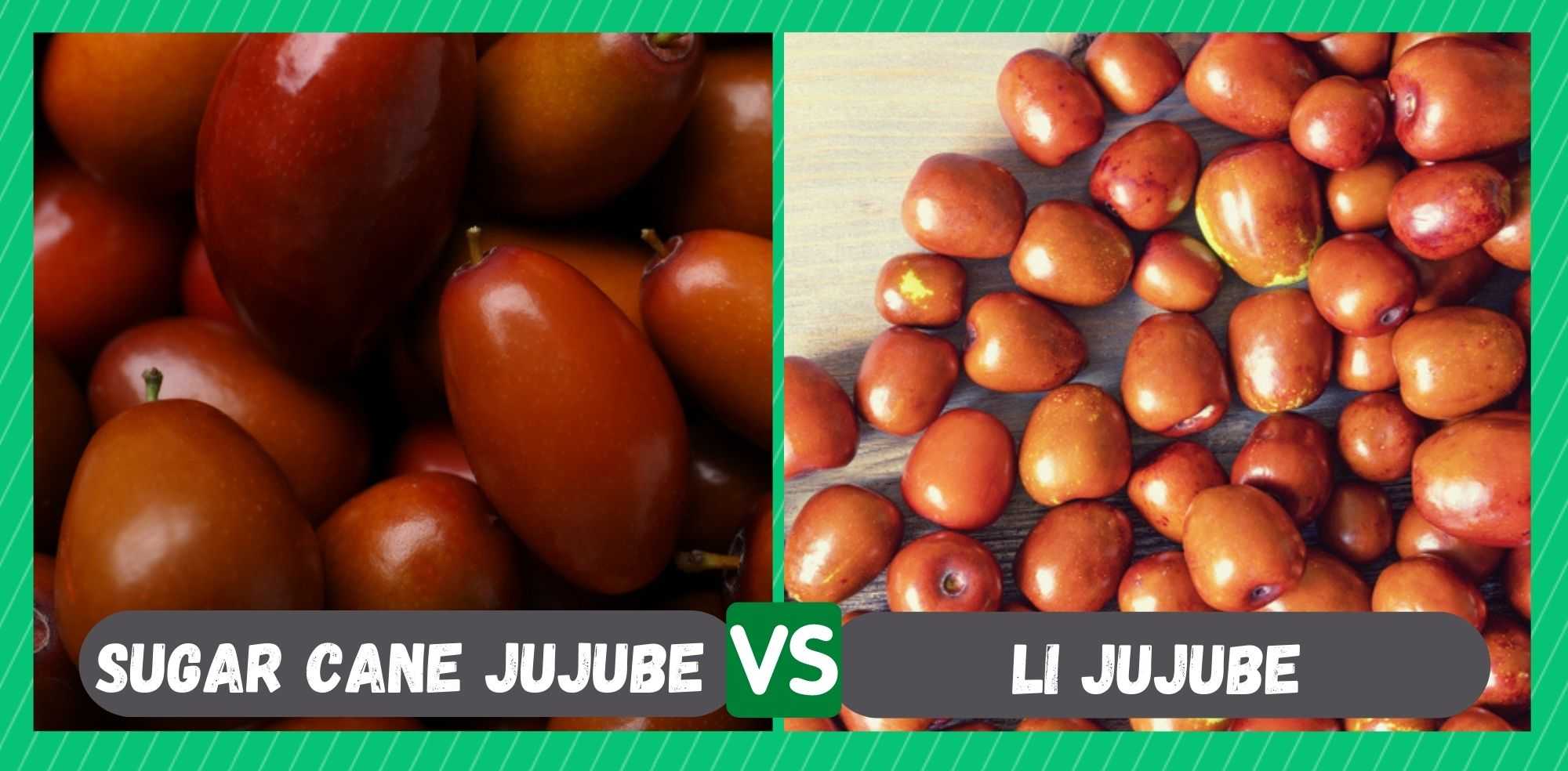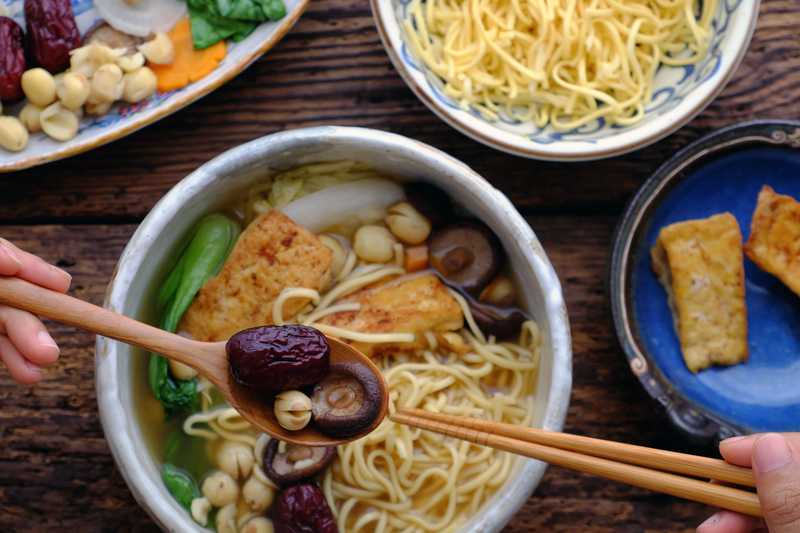
The jujubes are a yummy small fruit usually born on small or medium-sized trees with root sprouts and spines. It is famous with different names such as red or Chinese date, and this is most commonly found in South Asia.
Many people consider that the jujube fruit needs an “acquired” taste in the west, whereas, in South Asia, they are a seasonal fruit that is cherished for its flavors and texture once it is harvested and brought to the markets for people.
The people in the west use the jujube fruit as a delicacy, often used in desserts and candies. Many people prefer eating this fruit in its early stages of ripening, but not all varieties of jujubes can be eaten before they are fully ripened .
These tiny fruits are often grown on trees or large shrubs with flowers, depending on their variety and the region they belong to. As this fruit becomes ripe, they tend to change color and turn purple or dark red; they sometimes also have a wrinkled outer appearance.
The jujubes have a uniquely sweet flavor, and these fruits are used in desserts and candies. The jujubes can be grown in multiple ways, and often they are compared between the sugar cane jujube vs. li jujube.
There are a lot of significant features of both these kinds of jujube fruit, and here are some ways through which they can be told apart!
Sugar Cane Jujube vs Li Jujube
| Sugar Cane Jujube | Li Jujube |
| Small-sized | Medium-sized |
| Resist droughts | Resist drought |
| Crunchy texture | The dry and wrinkled texture |
| Sweet and juicy | Sweet and chewy |
| It cannot be easily grown | Can be quickly grown in home gardens |
| High in vitamins | High in vitamins |
| It can be used in desserts and candies | Can be eaten dry |
Sugar Cane Jujube
The sugar cane jujube has a remarkable resemblance to an apple for its crunchy texture and sweet taste. They are usually found in brown or red color, and when they are fully ripe, they look like most medium-sized fruits.
The sugar cane jujubes are born on hard trees and can resist droughts and long hot summers; they fully take their time to grow in the hot weather. One of the specific differences between the sugar cane jujube and li jujube is that they get ripe in areas or regions that are exceptionally hotter.
These particular types of jujube fruit can be grown in some areas of the United States; as mentioned these fruits thrive in hot temperatures such as 100F to a -28F. These fruits are also easy to grow in sandy and well-drained soil as they are unable to grow in wet ground.
Like most jujube fruit, the sugar cane jujubes are rich in vitamins and great for managing digestion or blood pressure issues. Many people in Asia prefer including sugar jujubes in their diets to manage their health issues, and this fruit is easy to eat because of its sweet and juicy flavor.
The sugar cane jujubes are eaten once fully ripe; this can help you feel their crunchy texture and sweet and juicy flavor. It can be stored in cans without any fear of them going bad. The sweet taste can replace other sweetening ingredients in various desserts.
Many people use sugar cane jujubes instead of apples because of their similar taste and texture. Sugar cane jujubes are small and look like dates, but the taste and texture resemble apples.
The jujubes have three stages of ripening, the early stage where they are yellow, the second stage is yellow-greenish, and the third is the final red-brown color which means this sugar cane jujube is ready to harvest and feasted upon.
One of the advantages of growing this fruit in the summers is that they don’t require a chilly environment to grow; they become ripe and juicy due to the heat, making them known as a summer fruit.
Li Jujube
The Li jujube comes from trees that grow the most extensive variety of fruit in the family of jujube fruits. They have a juicy and sweet flavor and look like round-shaped fruits; they are usually larger than other jujube fruits such as sugar cane and lang jujube.
The Li jujube fruit looks dry and wrinkled and has a reddish-brown color; unlike the sugar cane jujubes, these taste sweet and chewy, which is very similar to a date. This type of jujube fruit is an excellent addition to any home garden as they are very easy to grow and produce a lot of fruit.
The li jujubes, like the sugar cane jujubes, are high in vitamin A and vitamin C; most people prefer to grow them in their gardens so they can easily use this in their diet to boost their immunity and help fight different diseases.
Similar to the sugar cane jujube, the li jujube is also resistant to droughts and needs a long and hot summer season to flourish their growth; they are 2 inches long in diameter and can normally grow up to 8-10inch in height.
Unlike the sugar cane jujubes, the li jujubes can be picked at their yellow-green stage and be eaten fresh; you don’t have to wait for them to go wholly ripe or over ripe like the sugar cane jujubes before eating.
You can grow them in your gardens, where they have exposure to the sun for half of the day, and they require well-drained soil to grow and flourish easily. The li jujube trees can produce a lot of fruit in one season and can be used in different desserts or eaten as it is.
What’s The Difference Between The Two?
The jujube fruit family can be very identical to each other, but one of the main differences between the sugar cane jujube and the li jujube fruit is that the sugar cane jujubes are comparatively smaller in size, sweeter, and have a resemblance to an apple.
Whereas the li jujubes are the tallest in the jujube fruit family, and it depends on your preference; if you want something that has a more sweet taste and is in a smaller size, then you can opt for the sugar cane jujubes.
An added advantage of the sugar cane jujubes is that you can use them for desserts or candy besides eating them as they are.
Many people prefer growing li jujubes because the process is easy, and the li jujube trees give more fruit which is an added bonus, and their flavor resembles what a jujube fruit should taste like.
They can easily be grown and produced in home gardens, but you need to wait until the summer for them to get ripe.
The li jujube trees can have a long-lasting life as long as they have good drainage, are kept in dry soil, and are not over-exposed with sunlight. They also give ample fruit every season, which is beneficial if you love li jujubes.
The Bottom Line
When comparing these two types of jujube fruit, there is no significant difference apart from their taste, texture, and size. In the end, they both have the significant jujube fruit taste, and they are just two varieties of the same fruit.
It’s not easy for many people to tell any difference between the taste and flavor of the sugar cane jujubes and the li jujubes; it entirely depends on the purpose you want the fruit for. If you are looking for something to add to your desserts or inside candies, then the sugar can jujube is your best bet.
If you are looking to grow jujubes quickly, then you should consider the li jujube, as it is easy to grow, and the li jujube trees give more fruit. Although, you need to keep in mind that both these jujube varieties are found ripe after long hot summers and in hotter regions such as Southeast Asia.



